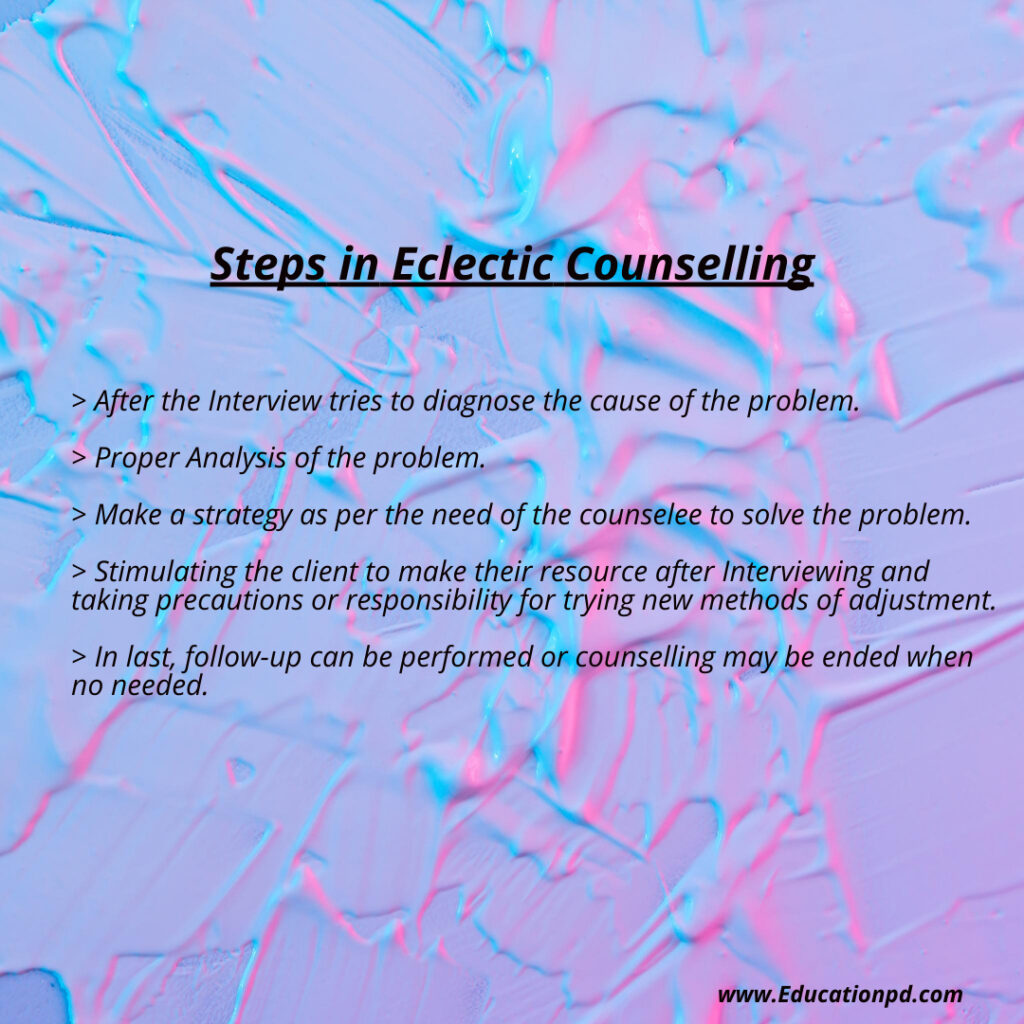Back to: Guidance and Counselling in Education B.ed Notes, M.A Notes, IGNOU Notes
What are The Major Elements of Counselling
Elements and steps in Counselling
Directive Counselling
- This type of counselling was given by B. G. Williamson.
- In this type the counsellor is in active role and directly take the decisions or suggests the counselee that means the counsellor have major role in this type.
- Williamson suggested this method is good for education and vocational issues or problems.
- In this type of counselling the problem is in central role and solution is given on the basis of that, means counselee behaviour is given less importance.
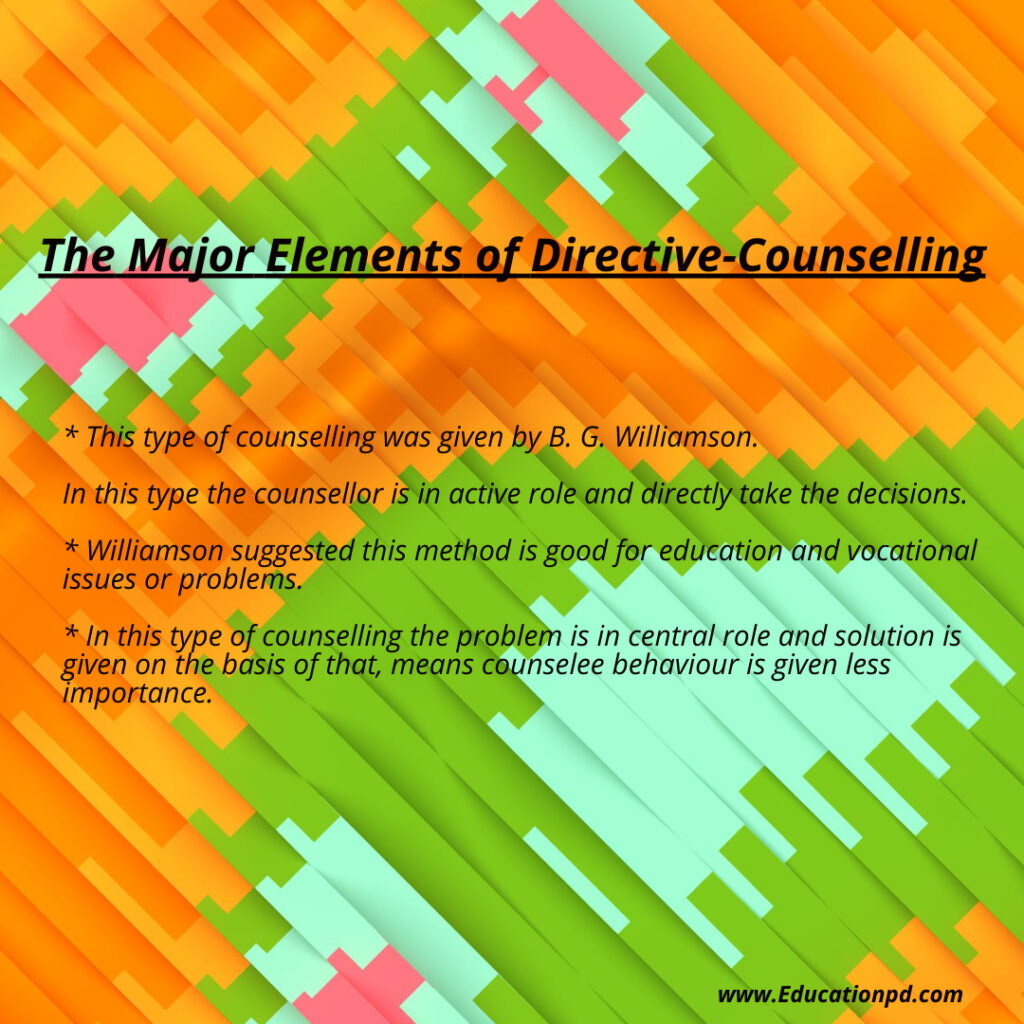
Steps in Directive Counselling
- Analysis: in this collection of information take place through interview, conversation with counselee or their family members or friends, etc.
- Synthesis: then the data is organised and summarised in the proper format to identify the potential, liabilities (TRI), habits, etc. of the client.
- Diagnosis: In this step problems and their cause is identified.
- Prognosis: In this step, the future development of the problem is predicted.
- Counselling: in this step, the counsellor can suggest bringing out the adjustments.
- Follow-up: From time to time follow-up is done.

Non-Directive Counselling
- This method was given by Carl Rogers (chief exponent) Centered Therapy, Rogerian therapy. Ent) and also called Client
- In this type, the counselee is allowed to express freely and the counsellor in this method only guides and directs.
- In this method, the counselee understands the problem with the help of the counsellor and takes an active part and plans what to do about the problem.
- Here the role of counsellor is passive.
- In this method, the emotional aspect is given preference rather than the intellectual aspect. Here, the democratic method is followed.
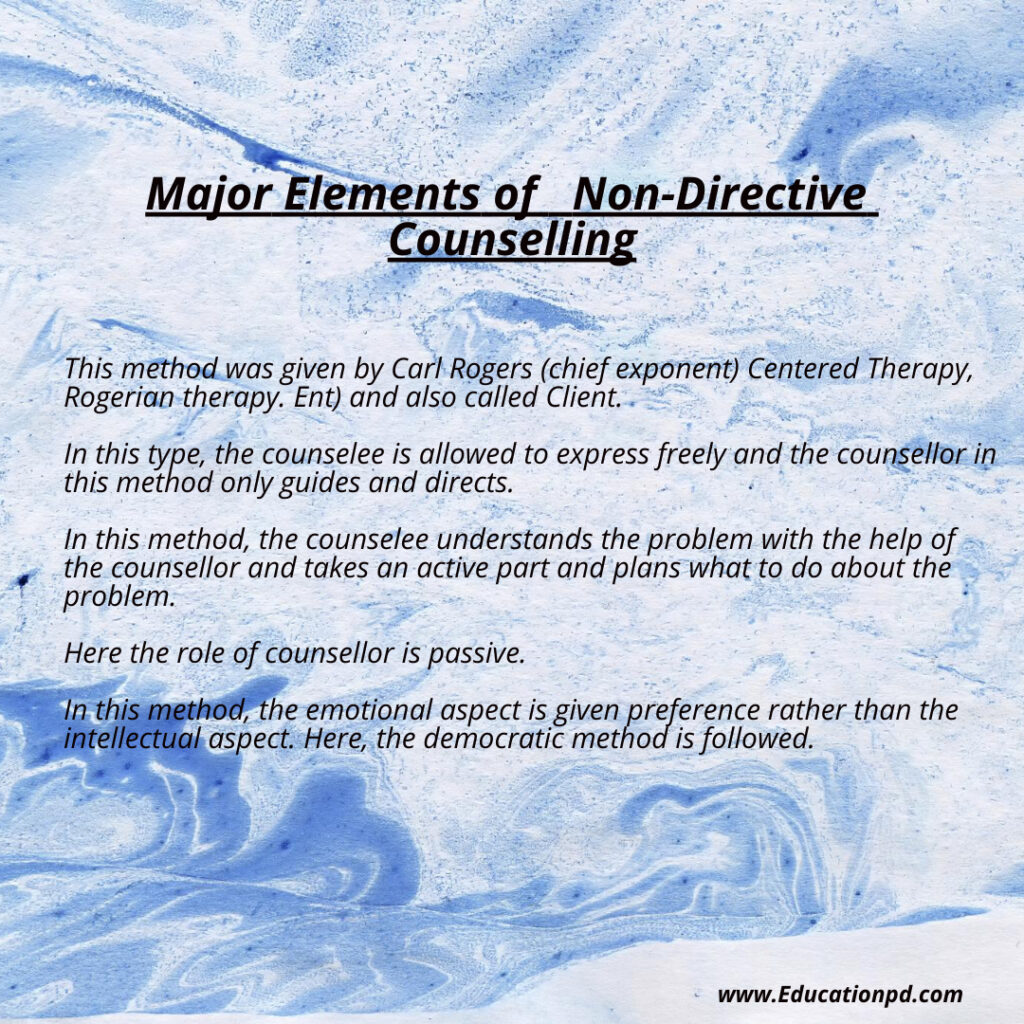
Step in Non Directive Counselling
- The counselee comes for help.
- The counsellor identifies the problematic situation.
- The counsellor encourages the counselee to express free about their problem.
- The counsellor accepts negative as well as a positive feeling about the problem.
- Now the insights or thoughts of the counselee are directed towards actions.
- For the solution of the problem, positive steps are taken.
- If the need for help is decreased then the counselling process can be terminated.
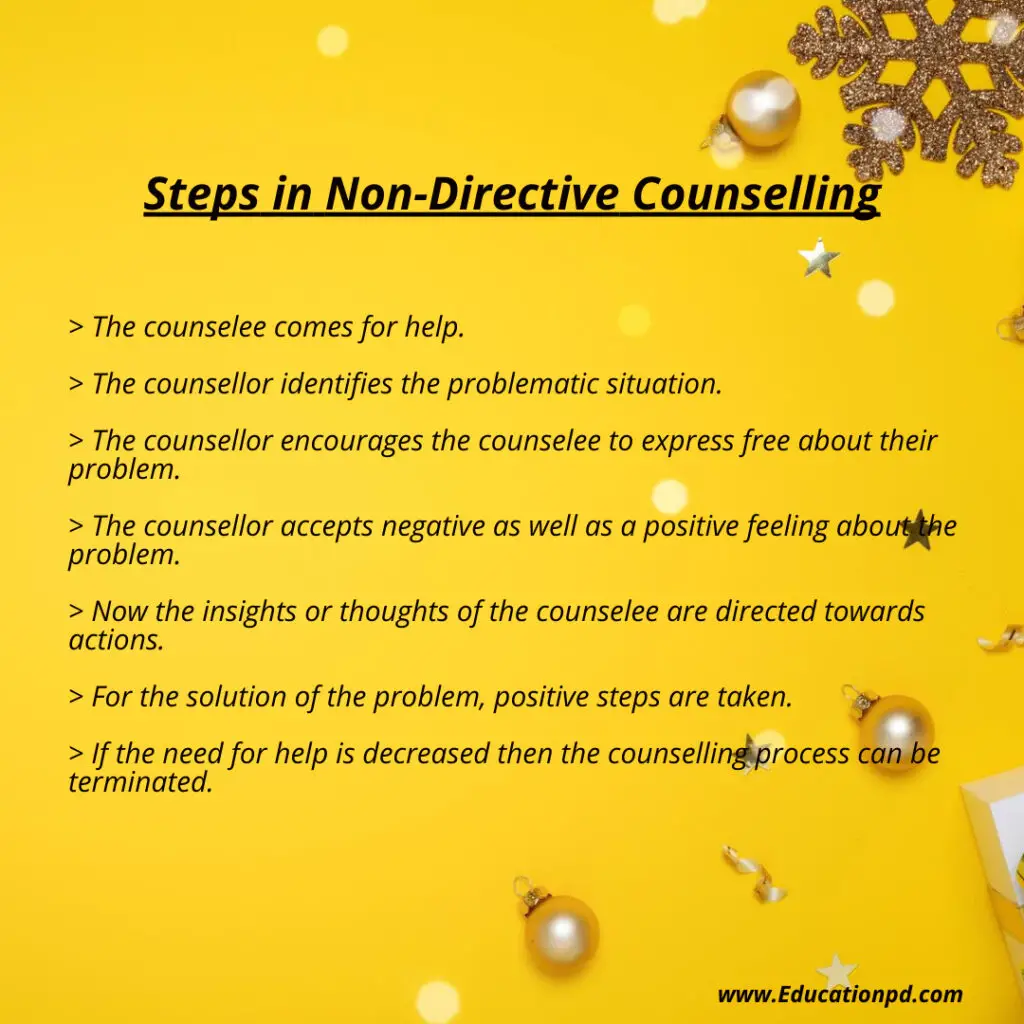
Eclectic Counselling
- This method was given by F. C. Thorne
- This method is a combination of both directive and non-directive counselling.
- In this method, the counsellor is neither passive nor active the counsellor understands different aspects and suggests the best strategies for them (counselee).
- In this method both counsellor and counselee works in cooperation
- Here the counsellor studies the needs of the client and may begin with the directive or non-directive or vice versa as per the need of the situation.
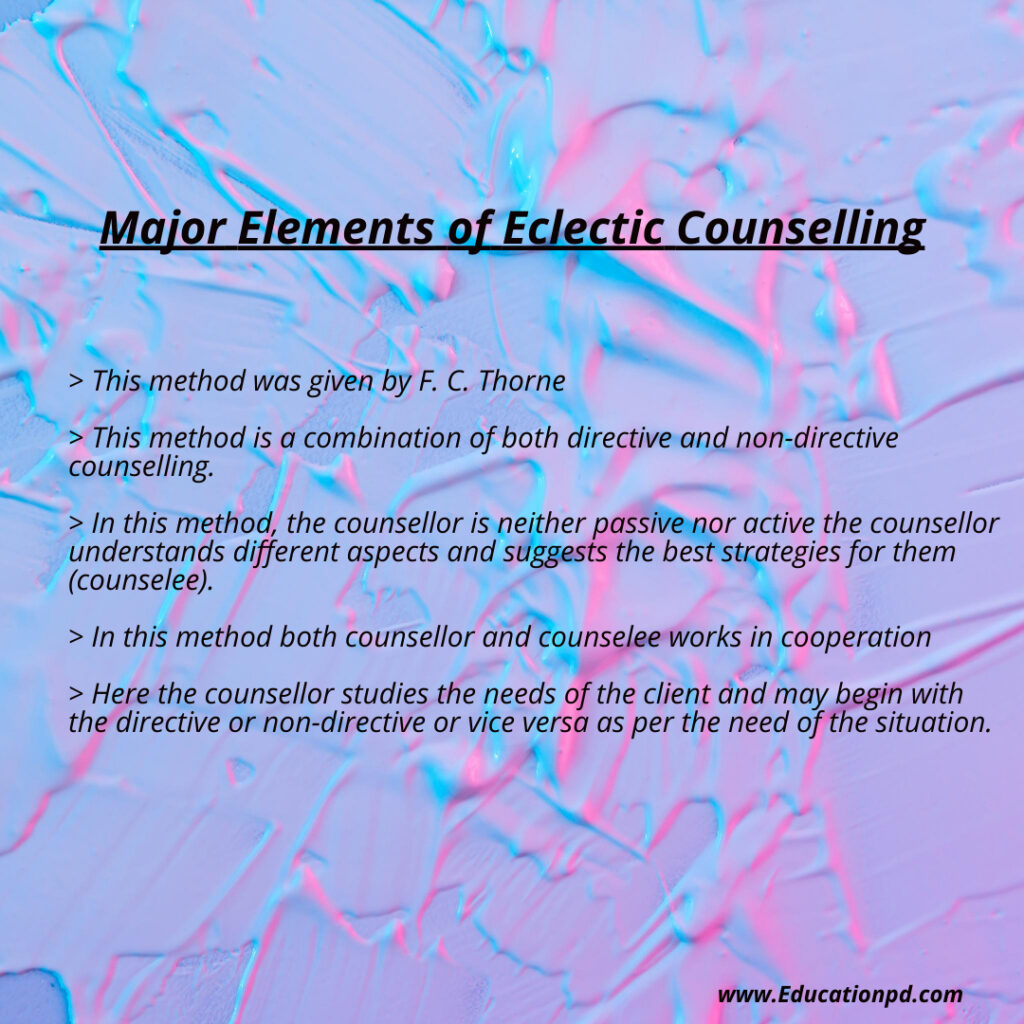
Steps in Eclectic Counselling
- After the Interview tries to diagnose the cause of the problem.
- Proper Analysis of the problem.
- Make a strategy as per the need of the counselee to solve the problem.
- Stimulating the client to make their resource after Interviewing and taking precautions or responsibility for trying new methods of adjustment.
- In last, follow-up can be performed or counselling may be ended when no needed.
